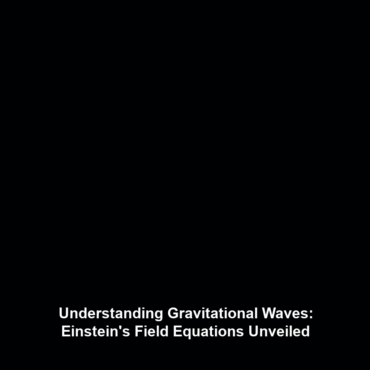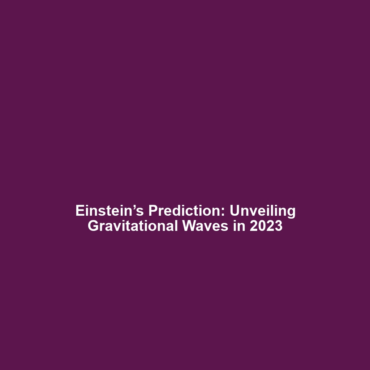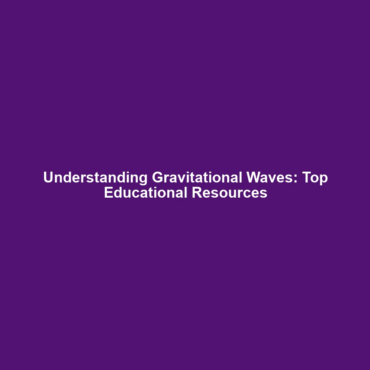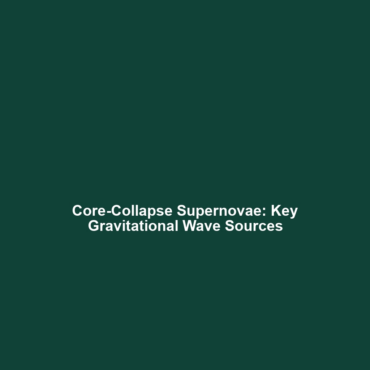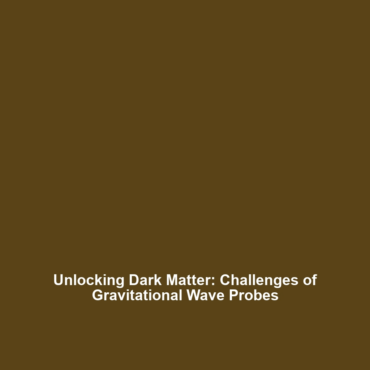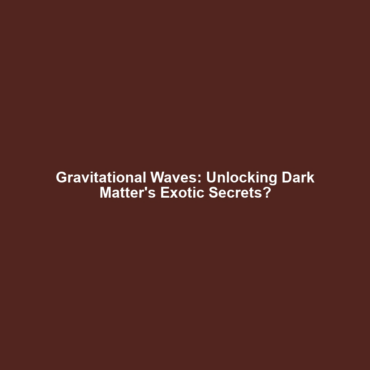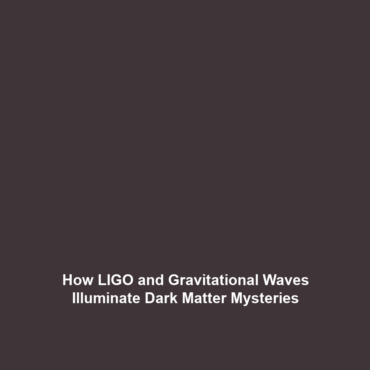Future Projects Like LISA to Detect Gravitational Waves
Introduction
Gravitational waves, ripples in spacetime caused by accelerating massive objects, represent a groundbreaking field in modern astrophysics. Future projects like LISA (Laser Interferometer Space Antenna) aim to advance our capabilities in detecting these elusive waves in space. This endeavor holds immense significance, as it will enhance our understanding of the universe, unravel mysteries surrounding black holes, and explore phenomena from the Big Bang. The prospect of a space-based observatory marks a pivotal moment for gravitational wave detection, potentially revolutionizing our grasp of the cosmos.
Key Concepts
Understanding Gravitational Waves
Gravitational waves are produced by some of the universe’s most energetic processes, such as the merging of black holes and neutron stars. LISA is designed to observe these waves in the low-frequency range, which is difficult to detect from Earth due to interference from seismic and atmospheric noise.
How LISA Works
LISA will consist of three spacecraft positioned in a triangular formation, orbiting the Sun. Using laser interferometry, it will measure minute changes in the distance between the spacecraft caused by passing gravitational waves. This technique capitalizes on the principles of relativity and quantum mechanics, providing a platform for groundbreaking observations.
Applications and Real-World Uses
The potential applications of LISA in detecting gravitational waves extend far beyond theoretical physics:
- Astrophysics: LISA will provide insights into the formation and evolution of black holes and neutron stars.
- Cosmology: By studying gravitational waves from cosmic events, researchers can gain a better understanding of the early universe.
- Fundamental Physics: Observations will test the limits of general relativity and could reveal new physics beyond current theories.
Understanding how LISA is used in the realm of gravitational waves will open new avenues for research and foster innovations across multiple scientific disciplines.
Current Challenges
While the LISA mission is promising, it faces several challenges:
- Technical Limitations: The precision required for measuring minute displacements over astronomical distances involves overcoming substantial engineering hurdles.
- Funding and Support: Securing adequate funding and international collaboration remains a critical challenge for long-term projects like LISA.
- Data Analysis: Developing robust algorithms to analyze the vast amounts of data generated will require advanced computing resources and techniques.
Future Research and Innovations
Exciting advancements are expected in the field of gravitational wave astronomy:
- Next-Generation Detectors: Future upgrades to LISA may incorporate advanced technologies to enhance sensitivity and range.
- International Collaborations: Global partnerships in research will facilitate shared knowledge and resources, pushing the boundaries of current scientific inquiry.
- Integration with Other Observatories: Collaborations with projects like the upcoming Einstein Telescope will provide complementary data for a more comprehensive understanding of gravitational waves.
Conclusion
Future projects like LISA are on the forefront of gravitational wave detection, embodying a significant leap for science. As these missions come to fruition, they promise to deepen our understanding of the universe and answer fundamental questions about its nature. Stakeholders and the scientific community are encouraged to support and engage with ongoing gravitational wave research to fully realize its potential. For further insights, explore our articles on related topics such as Black Hole Mergers and The Future of Space Exploration.

